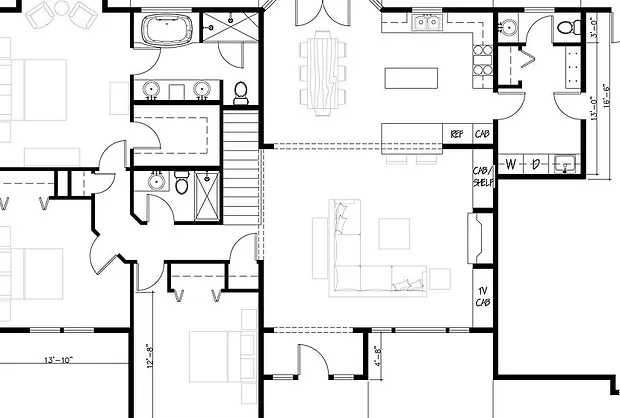Architectural drafting firms play a crucial role in shaping the built environment around us. As technology continues to advance, architectural drafters need to stay updated on the latest trends to remain competitive in the industry. If you want to know more about architectural drafting firms, you can visit https://kbrhino.com/architectural-drafting-and-design-service/.
1. Sustainable Design
Sustainability has become a key focus in the architectural industry, with more firms incorporating sustainable design practices into their projects. This trend is driven by the increasing awareness of climate change and the need to reduce the environmental impact of buildings. Some of the top trends in sustainable design include:
Key points:
- Utilizing renewable energy sources such as solar panels and wind turbines.
- Designing buildings with natural ventilation and daylighting to reduce energy consumption.
- Incorporating green roofs and rainwater harvesting systems to manage stormwater runoff.
- Using sustainable materials such as recycled steel, bamboo, and reclaimed wood in construction.
2. Building Information Modeling (BIM)
BIM has revolutionized the way architectural drafting firms design and construct buildings. This technology allows architects, engineers, and contractors to collaborate on a single 3D model, improving coordination and reducing errors during construction. Some key trends in BIM include:
Key points:
- Integration of BIM with virtual reality (VR) and augmented reality (AR) for immersive design experiences.
- Use of BIM for facility management and building maintenance after construction is completed.
- Implementation of cloud-based BIM platforms for easier access to project data from anywhere.
- Adoption of BIM for prefabrication and modular construction to streamline the building process.
3. Parametric Design
Parametric design is a top trend in architectural drafting firms that allows for the creation of complex and innovative building forms. Parametric design software enables architects to generate and manipulate design iterations based on specific parameters. Some of the key trends in parametric design include:
Key points:
- Customization of building shapes and patterns using algorithms and computational tools.
- Integration of parametric design with sustainable strategies to optimize building performance.
- Creation of parametric facades that respond to environmental conditions such as sunlight and wind.
- Exploration of biomimicry in parametric design to mimic natural forms and processes.
4. Digital Twin Technology
Digital twin technology is another top trend in architectural drafting firms that involves creating a digital replica of a physical building. This technology allows architects to visualize and simulate building performance in real-time. Some key trends in digital twin technology include:
Key points:
- Integration of Internet of Things (IoT) sensors with digital twins to monitor building operations and energy usage.
- Use of digital twins for predictive maintenance to identify and address potential issues before they occur.
- Implementation of digital twins for smart buildings that can optimize energy efficiency and occupant comfort.
- Development of virtual reality (VR) interfaces for immersive interactions with digital twins.
5. Collaborative Design Platforms
Collaborative design platforms are changing the way architectural drafting firms work together on projects. These platforms enable real-time collaboration and communication among team members, regardless of their physical location. Some key trends in collaborative design platforms include:
Key points:
- Integration of cloud-based platforms for easy access to project data and files.
- Use of virtual reality (VR) and augmented reality (AR) for immersive design reviews and client presentations.
- Implementation of project management tools within collaborative platforms to track project milestones and deadlines.
- Adoption of mobile apps for on-the-go access to design and construction information.
